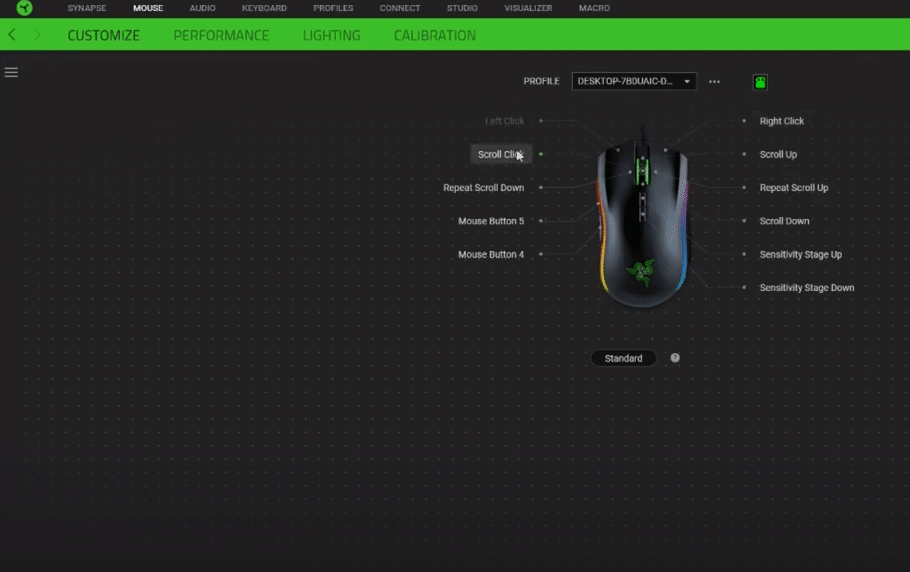

a cycle is to powercycle that port and -d 2 is to leave 2 second between the power off and on (for example you can set an delay here or for the uhubctl command in your sript also with for example "sleep 7" So the -l is the number of the hub you select (for me that was 20-6) and the -p is the port on that hub (port 3 for me) Port 3: 0103 power enable connect Įxample to use wich you then can use in a script or whatever uhubctl -l 20-6 -p 3 -a cycle -d 2 Port 1: 0503 power highspeed enable connect Use uhubctl to give a list of your ports by typing in the terminal window uhubctlĬurrent status for hub 20-6
#RAZER SYNAPSE 2 NOT DETECTING DEVICES INSTALL#
Install uhubctl by typing in a terminal window brew tap mvp/uhubctl Make sure you have the latest xcode command line tools, you can force this by typing in a terminal window sudo rm -rf /Library/Developer/CommandLineTools There is an much more easy way of thoing this : with uhubctl Which is clickable if saved with the extension. This script can then be called with a shell script: #!/bin/bash Product_name = _string(device, device.iProduct) I wrote a little Python3 script which will do this (to save my usb cables). Razer Synapse will say "Please connect a Razer Synapse enabled device" until I reconnect it. Open the terminal and run: csrutil enableįor me it works, with SIP enabled, the only problem is that I have to reconnect the device each time I start my computer and open Razer Synapse.Boot again in Recovery mode (Command + R).If this works, Re-enable SIP to maintain system security: Start Razer Synapse, probably it won't show the deviceĭisconnect, connect the device and it should appear Input Monitoring -> RzUpdater, RzDeviceEngineįull Disk Access -> RzUpdater, RzDeviceEngine My settings for the System Preferences/Security & Privacy/Privacy tab I checked the boxes for: (that's why we disabled SIP in Recovery Mode) Something with SIP (System Integrity Protection) might be the reason why the allow button doesn't show up The button should be located at the bottom of the General tab in Security & Privacy This should give a popup which tells to press the allow button in System Preferences Sudo kextload /Library/Extensions/RazerHid.kext Open a terminal and load the extension with the following command (reboot (normally) when asked):.Close the Terminal app and restart (normal reboot, not into Recovery Mode).usr/sbin/spctl kext-consent add R2H967U7J8 So first of all, thanks to and tried the solutions in the order I mentioned them,īoot into Recovery Mode: hold Cmd+R while starting upĬlick the Utilities menu and select Terminal.ĭisable SIP (System Integrity Protection) by running: csrutil disable You should now be able to load your Razer device AND have SIP enabled.Īlright, I managed to get it to work (with SIP enabled) on MacOS Big Sur.īasically I combined two solutions mentioned before.Īnd the solution provided by in this thread:

Boot once more into Recovery Mode, open a terminal, run csrutil enable, close the terminal and reboot.
#RAZER SYNAPSE 2 NOT DETECTING DEVICES CODE#
Manually loading the kernel extension (the kextload command) will display the error code 27 " Extension with identifiers not approved to load. I have upgraded to macOS Big Sur 11.1, and I can confirm that the solutions by and which had worked for me on 11.0, no longer work. I recently had to reset my System Integrity Protection settings ( csrutil clear) and once again ran into this issue, where my Razer device was not recognized.


 0 kommentar(er)
0 kommentar(er)
